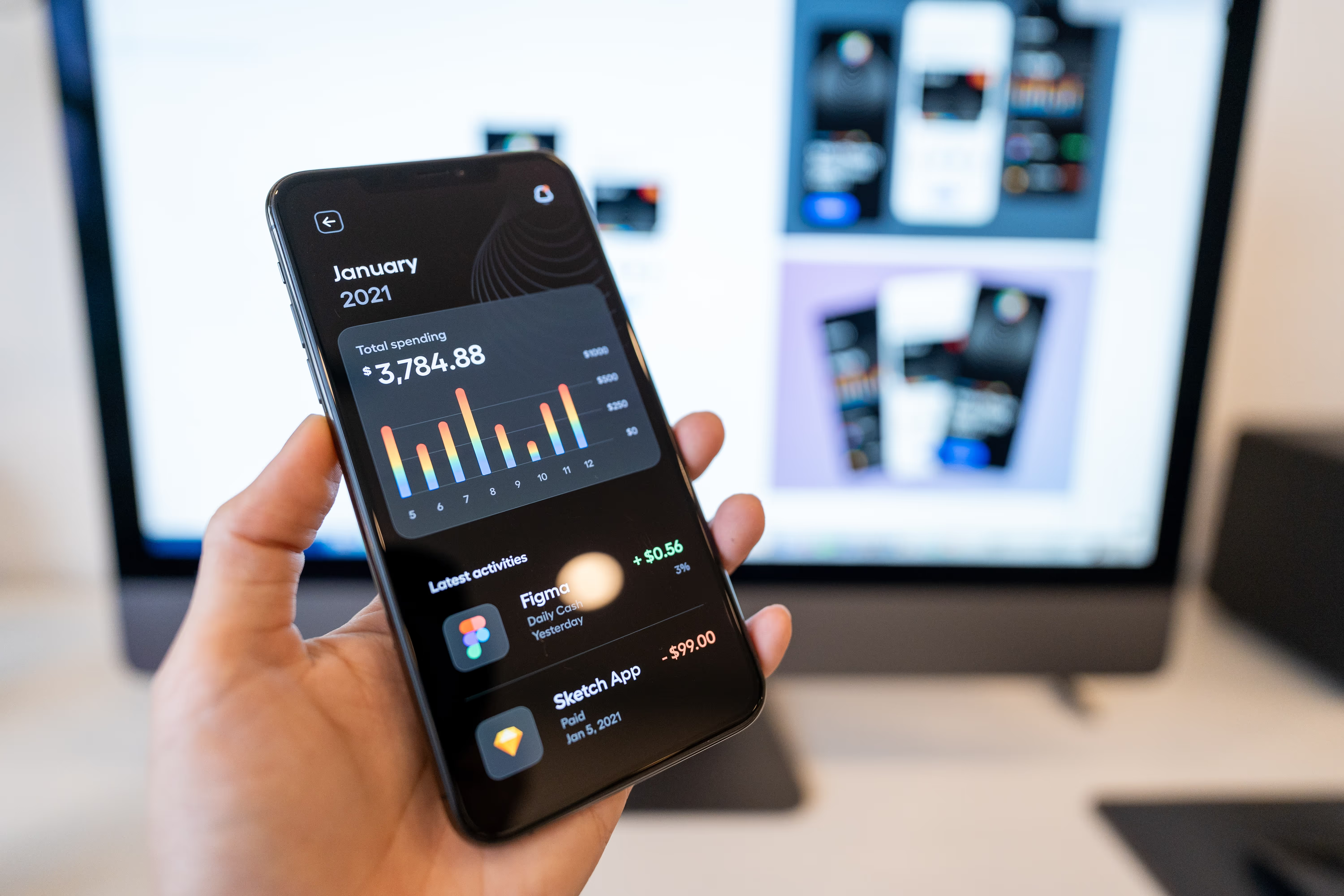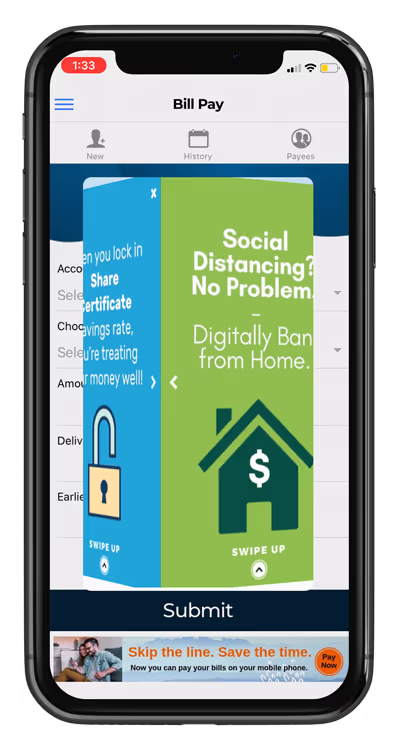What is Bank Digitalization?
Bank digitalization is the integration of the internet and artificial intelligence to streamline bank services for the consumer and the bank. This digital transformation can lead to a more personalized and convenient experience for the consumer and a reduced cost for the financial institution.
Banks have been working towards digitalization since the early days of the internet, but with the development of innovative digital technologies such as artificial intelligence and the blockchain, there are many new ways to meet the needs of consumers effectively while also keeping their data secure.
Implementing Digital Banking Solutions for the 21st Century
During the COVID-19 pandemic, we began to see a much greater demand for contactless banking and digital services. While most traditional banks already had a digital presence, usually a website or mobile app, the pandemic made digitization an essential process for banks moving forward. Now more than ever, consumers expect an online presence from banks and these platforms to feature services previously only offered at a physical location.
Digitalization Table of Contents
What is Bank Digitalization?
- Implementing Digital Banking Solutions for the 21st Century
What are Some Components of Bank Digitalization?
- Efficient Online Banking
- Convenient Mobile Banking (Phone Apps)
- Optimized Websites and Financial Resources
- Banking Automation (Fraud Detection, Predictive Banking, etc.)
What are the Benefits of Bank Digitalization?
- Giving Your Customers 24/7 Bank Access
- Providing Convenience and Security
- Standardized and Improved Data Accuracy
- Simplified Banking Transactions
- Cutting Down on Time-Consuming Tasks and Maintenance
Staying Competitive in the Digital Age
- Large Majority of Consumers Utilize Digital Banking
- Meet the Demands of a Tech-Savvy Public
DeepTarget is a Top-Rated Digital Marketing Agency for Banks

What are Some Components of Bank Digitalization?
The digitalization process is not the same for all financial institutions. For example, a local bank may implement radical changes quickly, while an international bank may need to spread its strategic changes over a more extended period. Therefore, when developing a digitalization strategy, it is essential to analyze the banking habits of your consumers and find ways to address their needs more efficiently.
Many financial institutions mistakenly view digitalization as simply implementing online and mobile banking. However, these two digital services are merely the foundation for your digital presence. A financial institution must also provide self-service tools on these platforms to give them value to the consumer.
These self-service tools may include:
• Account and loan balance visibility
• Customizable real-time account notifications
• Online account creation
• Peer-to-peer transfers
• Online bill payments, e-statements, and account-to-account transfers
• Credit or Debit card freeze controls (Source: Crowe.com)
It will also be crucial that banks provide support for these tools, primarily during the initial implementation. Physical staff can provide this support over the phone or email, but many banks are now choosing to integrate artificial intelligence-powered chatbots that can immediately answer any user questions. These features offer your online platform additional value, and by providing support, you ensure that consumers can successfully engage with these tools.
Even with automated chatbots, some financial services will still require human support. Due to this, all front-line bank staff must be knowledgeable about the online platforms. In addition, branch staff should be encouraged to tell customers about these online features and their benefits.
Efficient Online Banking
By providing an online platform, traditional banks allow their customers to access their accounts anytime and take care of their banking needs quickly from anywhere. In addition, this modern banking revolution has promoted more digital transactions than cash payments.
Digital transactions are more efficient and secure, as they can be conducted remotely between two individuals without the need to transfer cash. These transactions can also be tracked and recorded by the bank. This oversight reduces the risk of fraud or theft. As a result, online banking has allowed individuals and businesses to reduce how much time they spend handling their financial needs.
Convenient Mobile Banking (Phone Apps)
Mobile banking technology was a natural follow-up to online banking. The two technologies share many similarities; the main difference is that mobile banking works on smartphone devices.
Mobile banking services usually feature the same benefits online banking provides. In addition, smartphone technology offers unique security features such as fingerprint scanning and facial recognition software. These features allow users to access their accounts quicker and more securely than entering a password. Mobile banking also enables banks to reach their end users more efficiently, as they can send important messages or notifications straight to the user’s device.
Optimized Websites and Financial Resources
For online banking to be effective, a digital bank’s website should be optimized for customer experience in a few ways.
• It is vital to make sure that your website is mobile-user-friendly. Even though you may have an application for mobile users, new or potential customers will likely use the website before installing the application. Therefore, banks should format their website in a way that is intuitive for the audience.
• Bank websites should also include dedicated landing pages for their marketing campaigns. These landing pages will focus only on information relevant to the specific offer and are used to drive conversions.
• Your bank’s site may also include financial education resources, allowing consumers to better understand their personal finances. In addition, these educational resources will assist in building a relationship between a bank and its customers, as they will visit the site not only to handle their banking needs but also to seek advice and learn more about their finances.
Banking Automation (Fraud Detection, Predictive Banking, etc.)
Banks can now offer superior fraud detection, utilizing blockchain systems to keep transactions secure and artificial intelligence to identify anomalies. In addition, machine learning algorithms allow financial institutions to now assess the characteristics and needs of their consumers and use this information to determine if an individual is qualified for a loan offer. This use of banking technology is now called ‘predictive banking’ within the financial industry.

What are the Benefits of Bank Digitalization?
Bank digitalization offers many benefits that help both the customers and banks. Below are some of the most important advantages:
Giving Your Customers 24/7 Bank Access
Digital banking has shifted the paradigm in the financial services industry. By creating a digital platform, such as a website or mobile application, users can interact with their bank outside of business hours and from the convenience of their own homes. This transformation has allowed for greater personalization, efficiency, and accessibility in banking services.
Providing Convenience and Security
Digitalized banks offer a more convenient and user-friendly experience for their consumers. However, banks cannot sacrifice security for this improved convenience. To ensure this does not happen, banks utilize technologies we previously discussed, such as decentralized blockchain systems, artificial intelligence, and biometric recognition, to keep their customers’ data and finances safe.
• Blockchain systems ensure that user data does not fall into the wrong hands.
• Artificial intelligence systems monitor the flow of data to catch any fraudulent accounts or charges.
• Biometric recognition, such as fingerprint or facial scanning, allows users to securely access their accounts without the risk of other people seeing them input their password.
By combining these technologies, financial institutions can increase the security of their processes while also making them more convenient.
Standardized and Improved Data Accuracy
As the banking industry becomes more digital, it becomes more dependent on data. Accessible and reliable data is the foundation for all successful financial institutions in today’s world.
Yet, even though a bank may have extensive amounts of data, this data is useless if it is inaccurate or unorganized. Therefore, to ensure that data analytics are accurate, frequently audit data collection systems and ensure that they function correctly. From there, it is critical to implement a plan to use this data effectively to improve the customer banking experience.
Simplified Banking Transactions
Historically, it was common for a person to have a single bank account. Today, many people have multiple checking accounts, savings accounts, money market accounts, retirement funds, and more.
The same is true for businesses, as they also tend to have multiple accounts. Managing all these accounts can be time-consuming. As a result, digitalized banks that can offer a centralized hub for managing all of an individual or business’s accounts can provide a better customer experience.
Cutting Down on Time-Consuming Tasks and Maintenance
Banking has not always been a quick and efficient process. Thankfully, digitalization allows consumers and banks to avoid menial tasks and save time. Financial services, such as online money transfers to anyone in the country, have become almost instant.
Financial institutions save time by automating simple but time-consuming tasks that previously required a staff member to complete. AI automation can conduct routine system maintenance, test servers, or validate data. By removing the need for employees to spend time completing repetitive tasks, the branch’s efficiency and employee satisfaction increases. (Source: Forbes.com)
Staying Competitive in the Digital Age
To stay competitive in the financial world, most traditional banks have already begun digitalizing. According to PR Newswire, around 85% of banks have reported that they have integrated intelligent automation to some extent. Digitalization is now an essential process for banks because, without it, their competitors will easily outpace them!
Large Majority of Consumers Utilize Digital Banking
Trends show that younger consumers are far more likely to use digital banking services than older generations. Due to the pandemic in recent years, however, more older consumers are banking digitally as well. According to Business Insider, at least 75% of the population has stated that they utilize digital banking. This is a large majority of the market for digital banks and illustrates why providing these new products and services in the banking sector is essential.
Meet the Demands of a Tech-Savvy Public
The average consumer becomes more tech-savvy every year and is constantly looking for ways that technology can make life easier. Consumers now expect their financial institutions to keep up with new developments in the banking industry. In the past, the average person would stay loyal to their first bank for most of their life. Now, if a consumer notices that a rival bank offers features that are unavailable at their current bank, they may decide to switch to the other bank.
DeepTarget is a Top-Rated Digital Marketing Agency for Banks
DeepTarget takes pride in being a trusted solutions provider for banks and other financial institutions. We offer integrated banking products and financial education resources to help banks with their marketing and digital transformation!
Providing Leading Digitalization Solutions for the Financial Sector
DeepTarget provides its users with a simpler and more efficient way to provide value to their consumers. The DXP platform allows banks to efficiently deliver a unique mix of products and services for each of its customers based on consumer data.
Our DXP platform also streamlines the creation process of marketing campaigns and features live analytics tools to track the efficiency of each campaign. As of March 2019, we delivered more than 193 million impressions per month, resulting in over 11,400 new loan and deposit products and millions in cross-sell revenue!
Contact Us Today for a Demo of Our Services
Our representatives would be happy to demonstrate howDeepTarget can take your bank to the next level. If you would like a demo our services, you can reach us at info@deeptarget.com or feel free to give us a call at (256) 217-4055.

Request a Demo of Our Services
Let us show you how easily DeepTarget can simplify your digital marketing so you can receive up to 10x more product sales and lasting relationships with your digital users. Request a personalized demo for your Financial Institution today.




